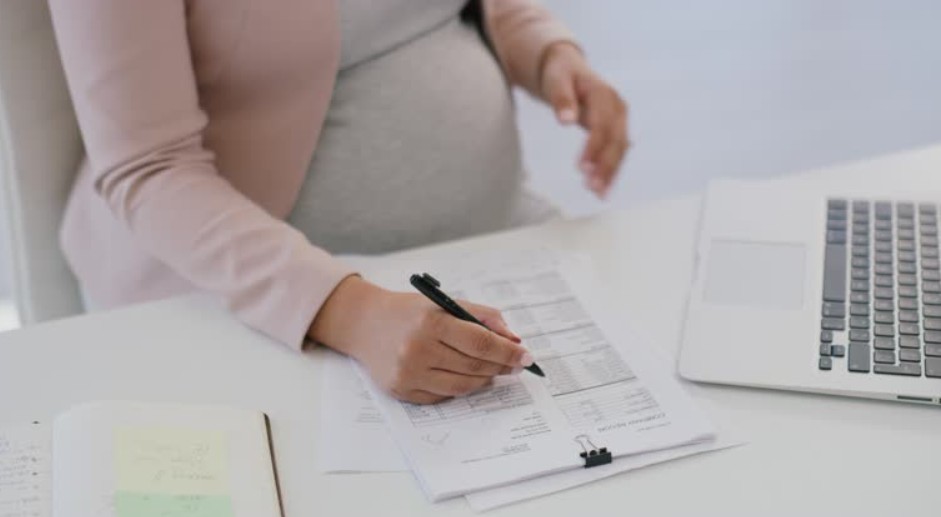When you’re preparing for a new baby, the financial side of things can cause just as much worry as the birth itself. For many women in the UK, especially those who don’t qualify for Statutory Maternity Pay (SMP), the big question is: How much is Maternity Allowance, and will it cover my needs?
This guide breaks it down in simple terms, with a real-life story to help you understand what it actually looks like in practice. If you’re based in the UK and searching for answers, this is the guide you’ve been looking for.
What Is Maternity Allowance and Who Can Get It?
Maternity Allowance is a UK government benefit aimed at women who are pregnant but do not qualify for Statutory Maternity Pay through their employer. Many women wrongly assume that if they don’t get SMP, they’ll have to go without any maternity financial support. This isn’t the case.
Maternity Allowance is specifically designed for:
- Self-employed women
- Women who recently changed jobs
- Women who haven’t worked long enough with their current employer to qualify for SMP
- Women whose earnings are too low to qualify for SMP
If you’ve worked or been self-employed for at least 26 weeks out of the 66 weeks before your baby is due, you could be eligible. It doesn’t matter if those weeks were consecutive or if you changed jobs during that period.
For many women, Maternity Allowance can be the difference between managing financially and struggling during maternity leave.
How Much Is Maternity Allowance?

The current Maternity Allowance amount in the UK is £184.03 per week or 90% of your average weekly earnings — whichever is less. This payment can be received for up to 39 weeks.
If you don’t meet all the criteria for the full rate, you may still be entitled to a reduced payment, which is currently £27 per week for the same period.
Here’s a quick breakdown:
- Full rate: £184.03 per week (2025 rate)
- Lower rate: £27 per week (if you didn’t work enough but did some work)
- Duration: Up to 39 weeks
You can start receiving payments from 11 weeks before your baby is due.
The weekly amount is usually paid directly into your bank account every two or four weeks. This consistency is especially valuable for mums who are self-employed or in flexible work without regular monthly salaries.
How Do You Qualify for Maternity Allowance?
To qualify for Maternity Allowance in the UK, you must meet several key conditions. Understanding these is essential to avoid missing out.
You can claim Maternity Allowance if:
- You’ve worked (employed or self-employed) for at least 26 weeks out of the 66 weeks before your baby is due.
- You’ve earned at least £30 a week in 13 of those weeks. These weeks don’t have to be consecutive.
- You’re self-employed and have paid Class 2 National Insurance contributions (or will be paying them).
If you don’t qualify for the full amount, you may still be entitled to the lower rate. Even unpaid voluntary work can sometimes count towards eligibility for the lower payment, depending on your circumstances.
You’ll need supporting documents, including:
- Your MATB1 certificate (proof of pregnancy) is provided by your midwife after 20 weeks.
- Payslips, invoices, or proof of earnings.
- Employment history for the relevant 66-week period.
It’s worth noting that you can apply for Maternity Allowance through the Jobcentre Plus or by filling in the form available on GOV.UK.
How Do You Apply for Maternity Allowance?

Applying for Maternity Allowance is fairly straightforward, but it’s essential to get the paperwork right to avoid delays.
Here’s the step-by-step process:
- Get your MATB1 certificate from your midwife. This confirms your expected due date.
- Collect proof of your earnings. This could be payslips, a P60, or your self-assessment tax returns if you are self-employed.
- Fill in the Maternity Allowance claim form (MA1). You can download it from the GOV.UK website or request a paper copy from your local Jobcentre Plus.
- Submit your application. You can post the completed form along with your supporting documents.
You can apply as soon as you are 26 weeks pregnant. The sooner you apply, the sooner your payments can start.
Most people hear back within two to six weeks. If there are any missing documents, Jobcentre Plus will contact you, so make sure you double-check your application before sending it off.
What Does Maternity Allowance Mean in Real Life? – A True Story
Sometimes, the official figures don’t tell the full story. Here’s one real example from a UK mum who relied on Maternity Allowance.
Emma’s Story – “Maternity Allowance Saved Me”
Emma, a self-employed hairdresser from Leeds, discovered she was pregnant six months after starting her own salon. Since she was her own boss, she didn’t qualify for Statutory Maternity Pay and was worried she’d have to keep working late into her pregnancy just to pay the bills.
“I honestly thought I’d have to go back to work straight after having the baby. I didn’t think I’d get any financial help,” she explained. “When I found out about Maternity Allowance, it was like a weight lifted. I qualified for the full rate, and although it wasn’t the same as my full wages, it meant I could take proper time off without panicking about rent and food.”
Emma applied at 26 weeks and started receiving payments about four weeks later. For her, Maternity Allowance was the reason she could enjoy those crucial first few months with her newborn without worrying about immediate financial pressures.
How Can You Make the Most of Maternity Allowance?
While Maternity Allowance provides crucial support, it’s usually lower than most people’s regular wages. That means you might need to plan carefully to make it work for your family.

Here are a few practical tips:
- Create a realistic maternity budget. Factor in what you’ll need weekly and where you might be able to save.
- Look into additional support. You might qualify for Universal Credit or Child Benefit to help top up your income.
- Save in advance if possible. If you know Maternity Allowance will be your main income during leave, start putting aside a little extra as soon as you can.
- Consider shared parental leave. Depending on your partner’s situation, you might be able to explore shared parental pay options.
Why Is It Important to Understand How Much Maternity Allowance Is?
Understanding exactly how much Maternity Allowance is and whether you qualify can make a huge difference to your maternity leave plans.
Too many women assume they’ll get nothing if they don’t qualify for SMP, and that’s simply not true. The Maternity Allowance is there to support mums in flexible, self-employed, or lower-paid jobs.
If you’re unsure, it’s always worth checking your eligibility directly through GOV.UK or speak to your local Jobcentre Plus. Don’t let uncertainty hold you back from applying.
Final Thoughts
Maternity Allowance may not completely replace your usual salary, but it can provide critical financial breathing space during one of life’s biggest transitions. Whether you’re self-employed, between jobs, or simply don’t qualify for SMP, it’s important to know your rights and take action early.






